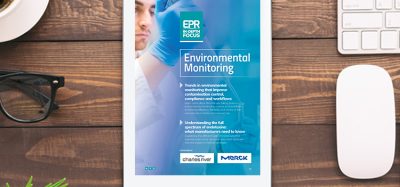The Encyclopedia of Rapid Microbiological Methods: The new fourth volume discusses technologies, regulatory acceptance and validation case studies
Posted: 13 June 2013 |
This is the second paper in our continuing series on Rapid Microbiological Methods (RMM) that will appear in European Pharmaceutical Review during 2013. As the editor for the Encyclopedia of Rapid Microbiological Methods, I provide a summary of the latest volume, which was published earlier this year. New case studies, regulatory guidance and novel technologies are highlighted, and encourage our industry to adopt new ways of performing microbiology assays across a wide range of applications.


Introduction
One of the greatest contributions to the field of microbiology came from the kitchen. In 1881, scientist Walter Hesse was searching for a solid medium that could be used to cultivate bacteria. Unlike gelatin, the growth medium of choice at that time, the material had to be stable at high temperatures, allow a variety of microorganisms to be separated easily, and resist digestion or liquefaction by certain microbial species. Fanny Angelina, Hesse’s wife and laboratory assistant, had the answer: Agar Agar, a gelling agent that she used in her jellies and puddings. This simple kitchen ingredient revolutionised the science of microbiology, allowing the separation and culturing of microbes to become a routine procedure. Now, almost 125 years later, microbiology agar is the most important and widely used microbial growth medium available today. Fanny would be proud … but should we be proud as well?
Although the growth of microbial cells on agar surfaces provides the laboratory with critical information about the amount and the type of organisms that may be present in a sample under evaluation, the time to result is usually longer than what is desired. Days and even weeks may elapse before microbial colonies are visually detected, and in most cases, confluent growth prevents individual organisms from being isolated, necessitating sub-culture onto additional agar media, delaying the time to result even further. Additionally, many laboratories are discovering that microorganisms, when stressed due to nutrient deprivation, or following exposure to sub-lethal concentrations of antimicrobial agents, such as preservatives, disinfectants, heat or decontaminating gases, may not replicate when cultured on artificial media, because the environment is not truly optimal for the resuscitation and subsequent proliferation of organisms that may be present. For these and many other technical and business reasons, the modern microbiological laboratory should look towards developing innovative approaches to the detection, quantification and identification of microorganisms. Fortunately, technology is now available, or close to being available, that will speed up microbiological analysis and provide results in real-time, allowing pharmaceutical manufacturing to embrace the concepts of Process Analytical Technology (PAT) and the use of rapid microbiological methods (RMM).
The Encyclopedia of Rapid Microbiological Methods is a culmination of many years of research, development and implementation of new technologies by a number of industry sectors, including pharmaceuticals, medical device, cosmetic and personal care, health and clinical, food and beverage, and municipal water, as well as government agencies and their subsidiaries, including bio-defence laboratories, first responders and homeland security. Furthermore, support for novel ways in which to conduct microbiological assays is becoming the norm for both regulatory agencies and pharmacopoeias, as demonstrated in recent initiatives and guidance documents provided by the FDA, EMEA, USP and Ph. Eur. The encyclopedia attempts to pull together the opinions of these organisations, suppliers of new microbiology platforms, and the labora – tories and end-users of the technologies that will be discussed within its pages.
The first three volumes
Volume I provides an overview of microbiological methods and opportunities for industry, regulatory and pharmacopeial perspectives and validation strategies. Topics include the history of microbiological methods, risk-based approaches to pharmaceutical microbiology, the realities and misconceptions of implementing rapid methods in the manu – facturing environment, the use of rapid methods in bio-defense and the food industry, PAT, comparability protocols, 21 CFR Part 11 and practical guidance on RMM validation and implementation.
Volumes II and III explore specific rapid microbiological methods, technologies and associated instrumentation, from both a supplier and an end-user viewpoint. Volume II concentrates on growth-based and viability-based rapid microbiological technologies, including flow and solid phase cytometry, ATP bioluminescence, impedance microbiology and a variety of microbial identification platforms relying on physiological responses.
Volume III concentrates on artefact-based and nucleic acid-based technologies, the detection of Mycoplasma and the use of micro – arrays, biochips and biosensors. Some of the platforms that are discussed include fatty acid analysis, MALDI and SELDI-TOF mass spectrometry, portable endotoxin testing, 16S rRNA typing, DNA sequencing, PCR, advances in Micro-Electro-Mechanical Systems (MEMS) including Lab-On-A-Chip systems, and a novel instantaneous and real-time optical detection technique for airborne microorganisms.
Volume IV
Much has changed since the publication of the first three volumes of the encyclopedia, which occurred in 2005. Since that time, new technologies have been developed and implemented, validation and statistical strategies have improved and most importantly, regulatory guidance and new policies have paved the way for an easier path to acceptance and implementation. Here is a brief overview of what is presented, which includes many end-user case studies:
- The application of modern microbial methods to the Quality Control testing of probiotics, including master and working cell banks, release and stability testing, viable cell counts, identification and strain typing, and absence of bacterial pathogens
- Considerations when aligning an RMM with an end-user’s particular needs, such as the drivers for rapid methods, time savings, same day results, sample compatibility, automation, using a qualitative method as a screening tool, validation, identification, integration with LIMS and other data management platforms l
- Overview of rapid and automated microbial identification systems, including MALDITOF and SELDI-TOF mass spectrometry, FT-IR, elastic and inelastic light scattering, ribotyping, PCR, gene sequencing, microfluidics and microarrays
- A case study for using MALDI-TOF mass spectrometry for the identification of microorganisms. Sample preparation, OQ, PQ, accuracy, precision, robustness and computer validation are discussed
- A second case study on microbial identification focusing on genotypic methods, amplification of DNA, automation and validation (accuracy, precision, robustness and specificity)
- A novel case study of a new growth-based rapid microbiological method that detects the presence of specific organisms and provides an estimation of viable cell count. Data from the validation studies, inclusivity and exclusivity testing, and a comparison to USP are provided
- An end-user case study that describes an evaluation of a relatively new growth-based rapid method that utilizes a membrane filtration workflow coupled with a viability staining technique. A review of the technology and evaluation results are offered followed by a discussion of the system’s use for monitoring mammalian cell cultures
- A comprehensive end-user evaluation using an optical spectroscopy technology for the real-time and continuous monitoring of airborne microorganisms in cleanroom and isolator environments
- Validation and workflow of an ATP bioluminescence RMM for the release testing of both sterile (sterility testing) and non-sterile products (bioburden assessments)
- An end-user’s validation approach for a rapid, growth-based detection system as an alternate sterility test for cellular immunotherapy products
- A case study by an end-user of a rapid, solid phase cytometry technology. The validation strategy, use of statistical models, and considerations for stressed cells and sample matrix effects are offered
- Understanding how to use statistics when validating an alternative sterility test, including probabilities and multiplicity, limit of detection and what is statistically ‘different’ versus what is statistically ‘equivalent’. This is a must read for anyone wanting to validate a rapid sterility test and how to design the studies and use statistics to justify the results
- The use of a novel qPCR-based system for the rapid detection of specific microorganisms l An end-user case study using a nucleic acid amplification platform for the detection of Mycoplasma. A review of regulatory requirements for nucleic acid amplification systems is also presented.
- An analysis of the science and workflow of a new nucleic acid amplification and microarray-based rapid method for the detection of Mycoplasma
- An end-user’s overview of rapid viral detection methods. Experiences with Vesivirus, MVM and other public viral incidents are explored, as well as other topics associated with the future directions in using molecular methods for viral detection
- A review of biopharmaceutical manufacturing, regulations, testing requirements and contamination events, and how the application of rapid methods fits in with the future of bioprocessing.
Introduction by FDA’s leading Expert on Rapid Methods
Volume IV starts with an excellent introduction by the FDA’s Dr. Bryan Riley, New Drug Microbiology Staff at the Center for Drug Evaluation and Research. Dr. Riley explains that modern approaches to process control (including Process Analytical Technology) require the availability of results in real-time (or at least close to real-time) to enable the operator to use the test results to make process decisions and adjustments. Furthermore, current rapid microbiological test methods are now able to start providing some of the advantages (from a process control and economic return standpoint) long enjoyed by our colleagues in the clinical and food microbiology labs. He concludes that pharmaceutical microbiologists would be well served by considering which of their samples would provide a benefit with a more rapid result and then assessing the current alternate microbiological methods to see if any of them are a good fit for their needs.
Summary
Volume IV of the Encyclopedia of Rapid Microbiological Methods provides new insights, validation and implementation guidance, and most importantly, encouragement for the pharmaceutical industry to embrace the next generation of microbiology testing platforms and strategies. Volume IV may be obtained through the PDA at https://store.pda.org/ProductCatalog/Product. aspx?ID=1899. Volumes I-III may be accessed at https://store.pda.org/ProductCatalog/Product. aspx?ID=513.
Biography
Dr. Michael J. Miller is an internationally recognised microbiologist and subject matter expert in pharmaceutical microbiology and the design, validation and implementation of rapid microbiological methods. He is currently the President of Microbiology Consultants, LLC (http://microbiologyconsultants.com). Over the course of 25 years, he has held numerous R&D, manufacturing, quality, and consulting and business development leadership roles at Johnson & Johnson, Eli Lilly and Company, Bausch & Lomb, and Pharmaceutical Systems, Inc. In his current role, Dr. Miller consults with multinational companies in providing technical, quality and regulatory solutions in support of RMMs, sterile and non-sterile pharmaceutical manufacturing, contamination control, isolator technology, validation and microbiological PAT. He also provides comprehensive training for his clients in the areas of rapid method validation and implementation.
Dr. Miller has authored more than 100 technical publications and presentations in the areas of rapid microbiological methods, PAT, ophthalmics, disinfection and sterilisation, is the editor of PDA’s Encyclopedia of Rapid Microbiological Methods, and is the owner of http://rapidmicromethods.com, a website dedicated to the advancement of rapid methods. He currently serves on the editorial board for European Pharmaceutical Review, is chairing the revision of PDA Technical Report #33: Evaluation, Validation and Implementation of New Microbiological Testing Methods, and routinely provides RMM training programs for the industry and professional organisations worldwide.
Dr. Miller holds a PhD in Microbiology and Biochemistry from Georgia State University (GSU), a BA in Anthropology and Sociology from Hobart College, and is currently an adjunct professor at GSU. He was appointed the John Henry Hobart Fellow in Residence for Ethics and Social Justice, awarded PDA’s Distinguished Service Award and was named Microbiologist of the Year by the Institute of Validation Technology (IVT).










Thank you i found it